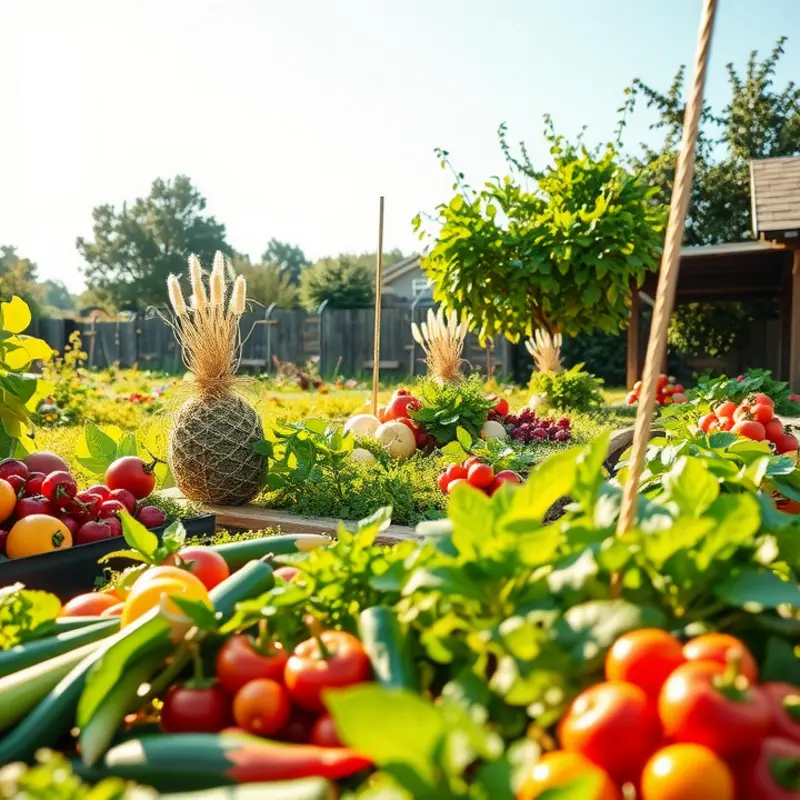The low-fat vegan diet surfaces as a compelling choice for those looking to enhance their health without sacrificing flavor or variety. By emphasizing whole plant foods while minimizing fats, this dietary approach offers numerous benefits, including weight management and improved heart health. Curious about how a low-fat vegan diet works and what it entails? Explore the key aspects, food options, and practical tips for adopting this refreshing lifestyle.
Understanding Low-Fat Veganism

A low-fat vegan diet emphasizes the consumption of plant-based foods while minimizing fat intake, particularly from oils and processed fats. This dietary approach not only promotes heart health but also supports overall well-being. The key principles involve focusing on whole foods such as fruits, vegetables, whole grains, and legumes while avoiding refined oils and high-fat plant foods like nuts and avocados in large quantities.
In terms of macronutrient breakdown, a low-fat vegan diet typically comprises around 10-15% of calories from fats, mostly coming from whole foods that naturally contain fats, such as seeds and soy products. Carbohydrates take the spotlight, making up about 70-80% of the diet, sourced from nutrient-dense options like brown rice, quinoa, and root vegetables. Protein, though a smaller component, primarily comes from legumes, beans, and other plant proteins, forming about 10-15% of the diet.
Adhering to this diet involves a conscious choice of foods rich in fiber and essential nutrients while steering clear of fatty additives. Cooking techniques such as baking, steaming, or grilling without oil are favored, enhancing flavor without adding calories. For those interested in more detailed cooking techniques, consider exploring options that avoid using gums and artificial thickeners, as highlighted in this guide on cooking without gums.
The science behind the low-fat vegan approach is compelling. Reducing fat intake, particularly saturated and trans fats, is associated with lowered cholesterol levels and a decreased risk of coronary artery disease. Moreover, plant-based diets are linked to a reduced risk of certain cancers, Type 2 diabetes, and obesity.
This dietary choice is not just about restraint but about embracing diverse plant foods that are rich in vitamins, antioxidants, and phytonutrients. A diet high in unrefined carbohydrates from plant sources ensures a steady energy supply and supports digestive health due to high fiber intake.
More than just a nutritional choice, low-fat veganism can lead to better mindfulness around eating habits. By focusing on whole, plant-based foods, individuals often adopt a more conscious approach, considering the impact of their food choices on their bodies and the environment. This aligns with the broader movement towards eco-friendly living and sustainable diets.
As you embark on this journey, remember that variety and balance are key. A colorful plate is not only visually appealing but also nutritionally adequate, helping you meet all dietary needs. With thoughtful planning and a commitment to these core principles, embracing a low-fat vegan lifestyle can be a rewarding endeavor for health and well-being.
Practical Tips for Low-Fat Vegan Living

Transitioning to a low-fat vegan lifestyle can feel like a daunting journey, but with practical strategies, it becomes an enriching experience. Meal planning is essential. Focus on incorporating whole grains, legumes, fruits, and vegetables. Prioritize starchy vegetables, such as sweet potatoes and squashes, which are both filling and naturally low in fat.
Adopt simple cooking methods that preserve nutrients and enhance flavors without added fats. Steaming, baking, grilling, and sautéing with broth or water offer tasty results. To infuse extra flavor without oil, use herbs, spices, and aromatic ingredients like garlic and onions. For more ideas on boosting flavor without excess fat, explore flavor boosters without salt.
When grocery shopping, focus on whole, unprocessed foods. Stock up on staples like quinoa, brown rice, and oats. Add a variety of beans, lentils, chickpeas, and peas. Don’t forget ample fresh or frozen fruits and vegetables. For snacks, choose air-popped popcorn or raw nuts and seeds in moderation.
Misconceptions about low-fat vegan diets often include concerns about protein deficiency. However, balanced meal planning ensures adequate protein intake from sources like legumes, tempeh, and tofu. Incorporate a wide range of colorful vegetables and fruits to meet micronutrient needs and make your plate visually appealing.
Common challenges in this lifestyle switch include palate adjustments and cravings. Gradually reduce the use of oil and high-fat ingredients. Try alternatives like mashed avocado instead of butter or hummus as a spread. Experiment with creative recipes that mimic favorite textures and flavors. For quick, nutritious meals, batch cook soups and stews on weekends.
Maintaining balance is about enjoying the process. Use weekends for meal prep, ensuring ready-to-eat options during the week. This not only prevents impulsive eating choices but also supports a sustainable routine. Diversify your meals with different cuisines, transforming traditional recipes into low-fat vegan versions.
Above all, listen to your body and mindfully enjoy your meals. Giving yourself time to adapt and finding joy in each culinary discovery makes this journey more fulfilling. Remember, every step towards embracing a low-fat vegan lifestyle is a step towards enhanced well-being and environmental sustainability.
Final words
The low-fat vegan diet presents a unique and health-conscious way to enjoy plant-based foods while being mindful of dietary fats. It offers numerous benefits such as weight loss, improved heart health, and enhanced energy levels. Transitioning to this lifestyle can also reignite your love for cooking and exploring new flavors. By understanding the principles and practical tips surrounding low-fat veganism, you can cultivate a nourishing and enjoyable approach to eating that promotes well-being. Remember, like any diet, the key is to find balance, listen to your body, and enjoy every bite.








